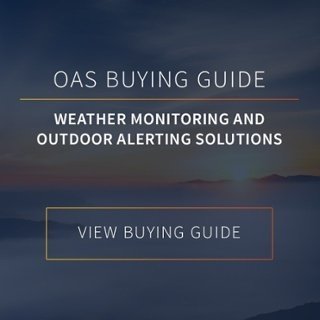Lightning in New Jersey Is Dangerous to Park Visitors
- Apr 24, 2018

When most people think about lightning in New Jersey, they don’t imagine it as a big deal. When we think lightning, we think about Florida, the lightning capital of the U.S. Or we don’t think about the state at all. Instead, we think about memorable photos of lightning striking the nearby Empire State Building or storms forcing us off the beaches down at the Jersey Shore.
However, lightning dangers in the state of New Jersey are much more common than most people think. This danger is amplified at locations where people are outdoors. Parks and recreation facilities are a hot spot for lightning threats throughout the state’s beaches, wetlands, and mountains. Unfortunately, lightning injuries and death are no stranger to the Garden State. Keep reading to explore two cases of dangerous lightning in New Jersey over the past few years and how real-time lightning data could have helped.
Man Killed at Demarest High School
Lightning in New Jersey, or any other location, always has the potential to be deadly. This is true even when skies are blue. On September 7th, 2012, lightning struck and called a man on the campus of Northern Valley Regional High School in Demarest, NJ. Without a warning from the National Weather Service or the school itself, the victim had no idea the storm was coming. Local police said the storm swept in without much warning and the lightning started while the skies were still sunny.
This chain of events is not uncommon. We know that lightning can strike up to 10 miles away from a storm. A lot of the time, people who are outdoors are in danger of being struck without even knowing it.
The National Weather Service did send out a Severe Thunderstorm Warning, but it was too late. The fatal strike occurred at 4:22 PM while the alert was issued at 4:35 PM.
Our advanced lightning detection network, on the other hand, detected the nearby total lightning activity at 3:50 PM. This would have given the victim at 32-minute notice to seek shelter and protect himself from the incoming storm. We were able to detect this storm sooner than anyone else because we monitor total lightning. Total lightning is the combination of cloud-to-ground and in-cloud lightning strikes. In-cloud lightning strikes make up nearly 80% of all lightning strikes and are often precursors to severe weather events like cloud-to-ground strikes, high winds, and even tornadoes.
Three Children Injured by Lightning at Campground
Lightning isn’t always deadly, but survivors can sustain terrible injuries. On July 3rd, 2014 lightning created another safety problem in Newton, NJ. The kids were at the Great Divide Campground when a storm rolled through the area.
Our network showed the first in-cloud lightning strikes within a 10-mile radius of the campground occurred at 4:35 PM. Ten minutes later, lightning activity began to build south of the campsite. In the next ten minutes, the lightning started to approach the campground area as the storm shifted NE towards Sparta Township. By 5:38 PM the storm reached the campground and we detected dangerous cloud-to-ground strikes. This is the time the children were injured.
Our network shows a yellow cloud-to-ground strike an estimated 125 yards away from the campers. This is likely the strike that injured them. When lightning injures people without directly touching them this is known as an indirect lightning strike. Indirect lightning strikes account for 50% of all lightning injuries. These campers were lucky because indirect lightning strikes can kill even though they are not as strong as direct lightning strikes. In 2016, an indirect lightning strike that hit the ground in Norway killed over 300 reindeer in an instant.
Protecting People Outdoors with Advanced Warnings

The best way to protect people at parks and schools from lightning in New Jersey and all other locations is with advanced warnings. The most advanced warnings come from systems that rely on total lightning detection.
There are a ton of alerting options out there, so it’s important for decision-makers to be smart and do their research. If you’re using a lightning prediction system, you’re using an antiquated technology that doesn’t even detect lightning strikes. If you’re using a system that detects only cloud-to-ground strikes, you are also leaving people in danger because nearly 80% of all lightning strikes in in-cloud discharges. To learn more about the best outdoor alerting systems, please download our free buying guide.







